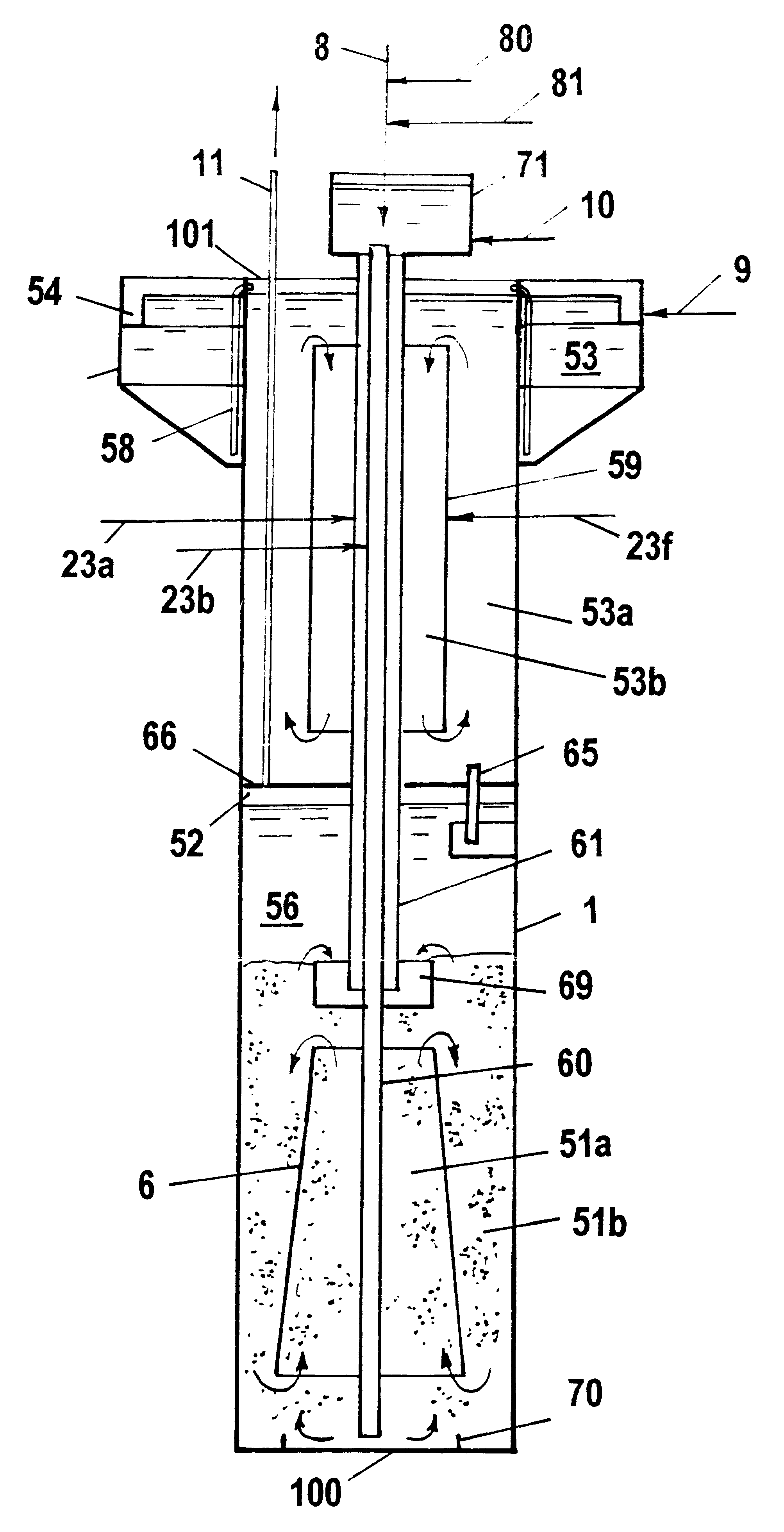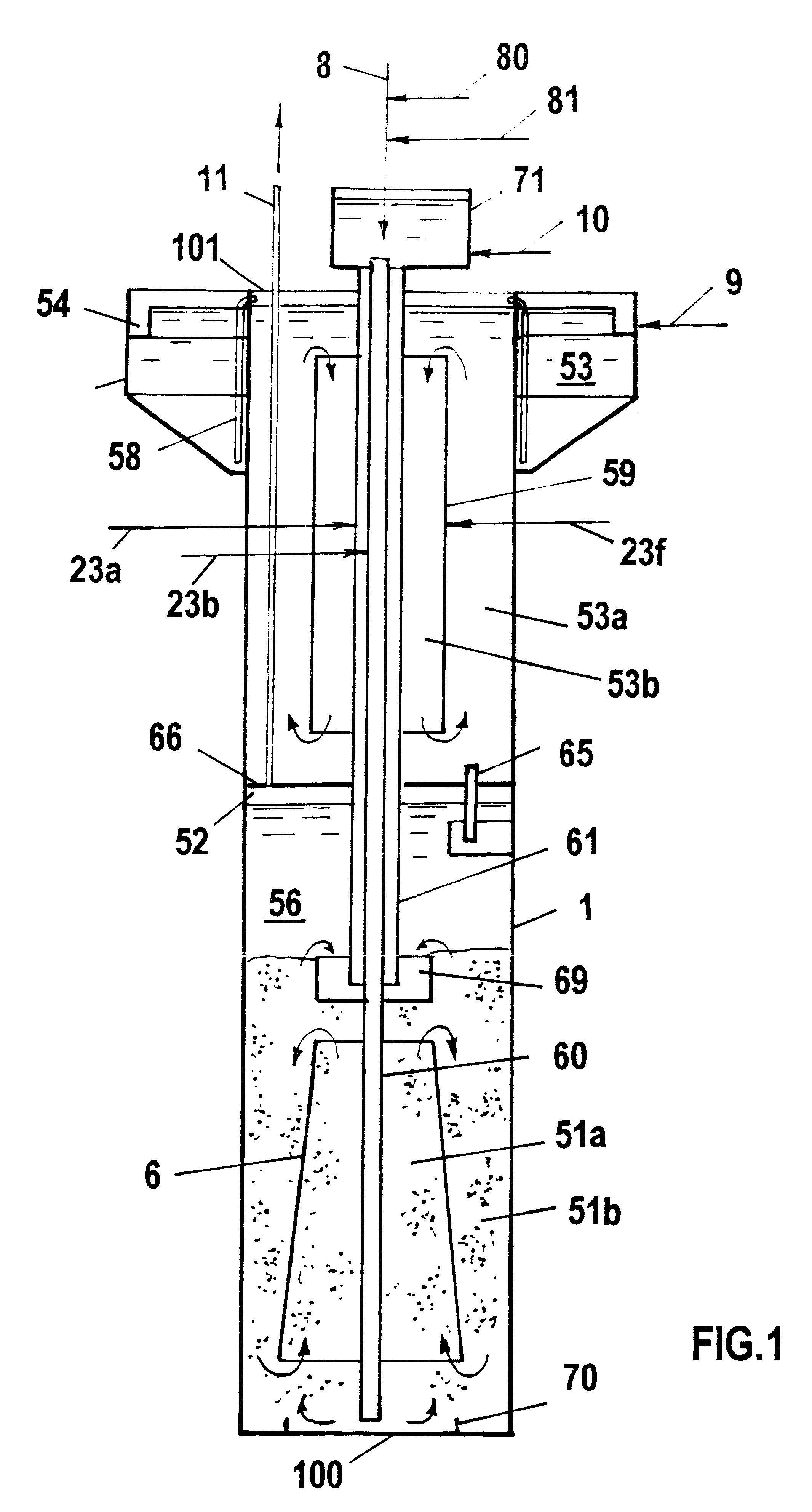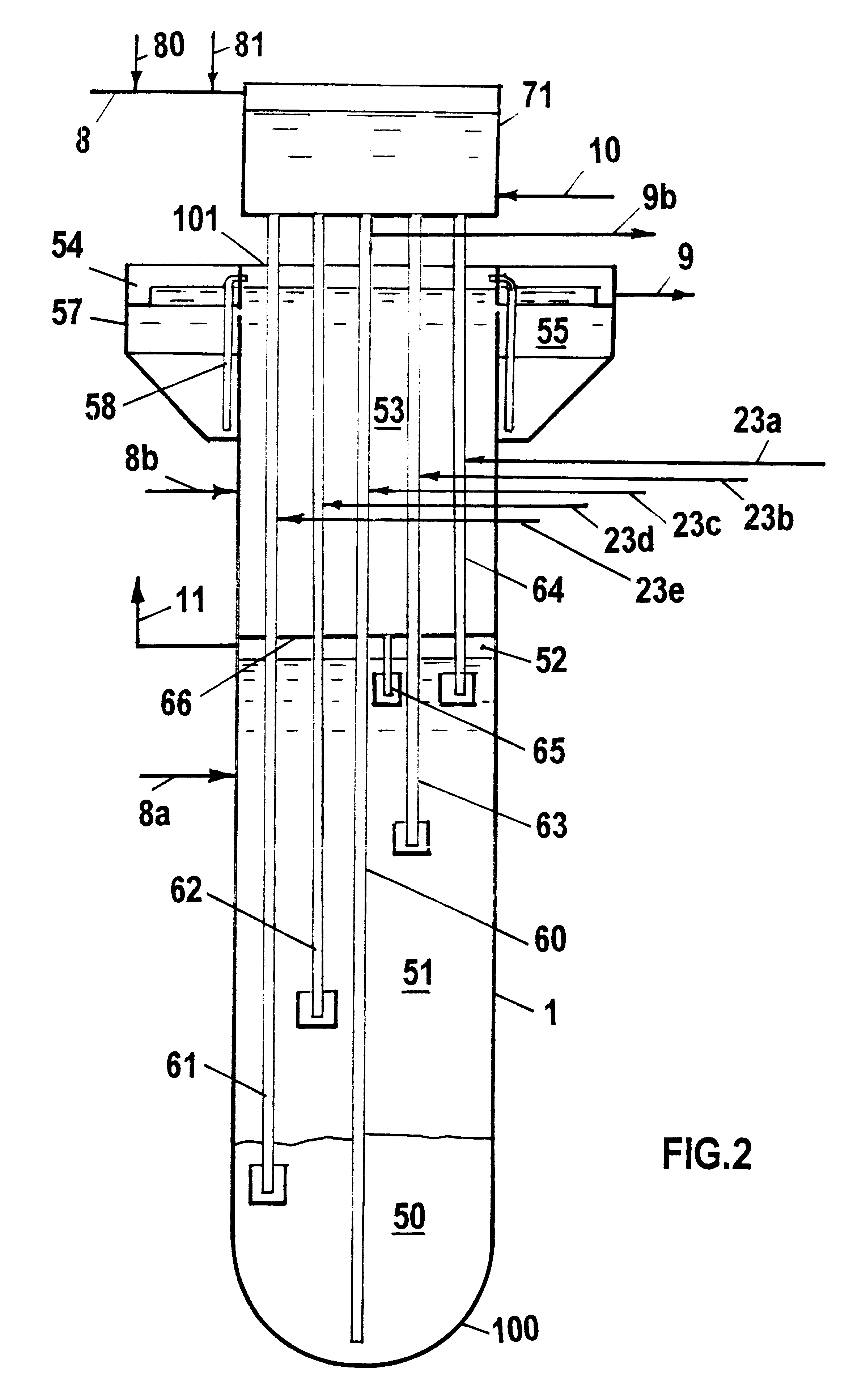Biological treatment process
a biological treatment and process technology, applied in biological water/sewage treatment, multi-stage water/sewage treatment, water/sewage treatment by degassing, etc., can solve the problems of difficult selection of pumps with very low heads, complex electrical components of many pumps, and similar problems of propeller mixers. to achieve the effect of easy operation, repair and replacemen
- Summary
- Abstract
- Description
- Claims
- Application Information
AI Technical Summary
Benefits of technology
Problems solved by technology
Method used
Image
Examples
Embodiment Construction
[0026]Referring now to FIG. 1, there is shown a reactor 1 having a bottom 100, a top 101, and a partition 66 defining the bottom anaerobic section comprising zones 51a and 51b, 56, and 52 respectively for reaction, at least partial sludge separation, and gas collection. A mixing cone 6 is a passive mixing means. Pipelines 60 and 61 with air (or oxygen, or another nondigestion gas) supply lines 23a and 23b connected to an elevated vessel 71 are the active mixing means. Optionally, vessel 71 is provided with an air line 10 and distributors (not shown) for stripping carbon dioxide. Also optionally, an influent line 8 and lines for feeding reagents 80 (for example, for lime) and 81 (for example, for iron) are connected to vessel 71. Alternatively, lines 8, 80, and 81 can be connected to the anaerobic process stage, or to the aerated process stage. A calming box 69 is provided at the lower end of pipeline 61, and flow directors 70 are provided around the lower end of pipeline 60. The gas...
PUM
| Property | Measurement | Unit |
|---|---|---|
| height | aaaaa | aaaaa |
| height | aaaaa | aaaaa |
| boiling point temperature | aaaaa | aaaaa |
Abstract
Description
Claims
Application Information
 Login to View More
Login to View More - R&D
- Intellectual Property
- Life Sciences
- Materials
- Tech Scout
- Unparalleled Data Quality
- Higher Quality Content
- 60% Fewer Hallucinations
Browse by: Latest US Patents, China's latest patents, Technical Efficacy Thesaurus, Application Domain, Technology Topic, Popular Technical Reports.
© 2025 PatSnap. All rights reserved.Legal|Privacy policy|Modern Slavery Act Transparency Statement|Sitemap|About US| Contact US: help@patsnap.com



